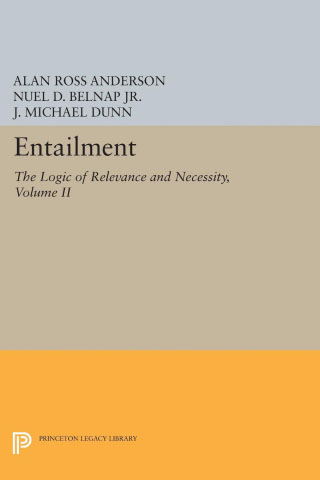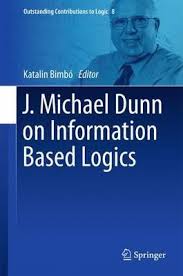|
 Michael Dunn, at the time of his PhD. It will soon be published in the book series
Logic PhDs
with a presentation by Katalin Bimbó
Michael Dunn, at the time of his PhD. It will soon be published in the book series
Logic PhDs
with a presentation by Katalin Bimbó
I shortly after connected the 4-valued semantics to Richard Jeffrey’s coupled truth-trees and published the “relevant” part of my APA-ASL talk in 1976 as "Intuitive Semantics for First-Degree Entailments and Coupled Trees." I went on to develop "A Kripke-Style Semantics for R-Mingle Using a Binary Accessibility Relation," as a modification of the Kripke-Grzegorczyk semantics for intuitionistic logic, but allowing sentences to be both true and false, and requiring preservation of falsity as well as the usual truth preservation. In the late 1970’s I developed a way of looking at this 3-valued semantics in terms of
homomorphic images, and also explored Robinson’s Arithmetic inspired by Robert Meyer’s Relevant Peano Arithmetic. In 1979 in a paper with Robert Meyer and Richard Routley we showed that Curry’s Paradox (which uses only the implication and not negation) was provable in the standard relevance logics. This destroyed for me the hope that an interesting relevant (paraconsistent) set theory could be developed, because the underlying logic would have to be too weak to be useful. In the 1990s and early 2000s I explored a number of general definitions of negation which allowed for paraconsistency.
3) How do you see the evolution of paraconsistent logic? What are the
future challenges?
I see paraconsistent logic(s) as a tool for reasoning. Sometime while an undergraduate student at Oberlin (perhaps influenced by the spirit of their earlier student Quine), I became a Pragmatist. In the last few years I have actually articulated this into a view of “Logics as tools.” Perhaps this is because I gradually converted from philosophy to computer science (or more accurately I added the latter to the former). So I literally see the evolution of paraconsistent logics as a kind of survival of the fittest tool for the job at hand.
Anyway, the main motivation that I see for paraconsistent logic comes from the Internet and its World Wide Web. Belnap was prescient in motivating what has become known as the Belnap-Dunn 4-valued logic by talking of an unstructured database in which various people might enter inconsistent data. This is before the World Wide Web. And now not only do we have this enormous unstructured database, but we have “bots” roaming it for information. Assuming that these bots will perform inferences, I see paraconsistent logic as an essential tool to prevent “Explosion.” Ideally this would be combined with other tools for reasoning and learning such as probability and statistics, deep learning and other machine learning techniques. My most recent work on paraconsistent logics expands the 4-values to in effect a 4-valued subjective probability, using what I call the “The Opinion Tetrahedron.” This is an expansion of Audun Jøsang’s Opinion Triangle into 3 dimensions. Perhaps the most theoretically challenging problem for paraconsistent logics has to do with incorporating belief revision and defeasible reasoning. Ed Mares and Katalin Bimbó have respectively advanced these topics in the context of relevance logic.
There are other possible applications of paraconsistent reasoning in computer science, for example in cloud computing where updates have to be done more or less “simultaneously” across a number of computers. The updates are not truly simultaneous, and so there is the danger of conflicting information.


|


